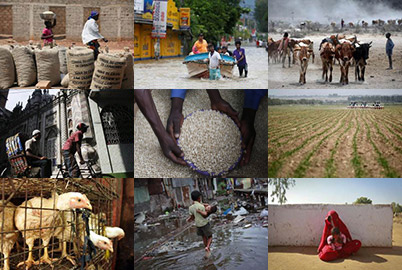In early January 2005 I left Aceh, having been the first UNICEF international aid worker on the devastating scene left by the Indian Ocean tsunami that hit Indonesia&${esc.hash}39;s northern tip on December 26, 2004. As I flew from Australia back to New York, I began to absorb the irony of the &${esc.hash}39;perfect disaster&${esc.hash}39;.
The majority of people in the world had been gripped by the spectacle as it unfolded on television, and public shock and compassion had prompted governments to send aid, rescue teams and navies to the disaster zone in unprecedented proportions.
No other aid operation since World War Two has had such a fast, well-funded and focused response. Isolated and war-wracked Aceh became a miniature United Nations less than a week after the wave struck, as US marines rubbed shoulders with Ukrainian pilots delivering French medicine to Singaporean doctors who were tending Acehnese victims.
What did this comprehensive response to the tsunami tell us about our approach in the aid business and the impact of media interest?
INSPIRING PUBLIC IMAGINATIONUnderstanding is one of the foundation stones of aid operations, along with funding, expertise and human compassion. The great lesson of the 2004 tsunami was that, if the magnitude of a disaster can be understood by the public through the media, then the three other elements will surely follow.
Governments are exceedingly sensitive to the demands of their electorates, and one of the key hopes in communicating around the world&${esc.hash}39;s most important issues is to build a strong interest that has staying power in the public imagination.
With the tsunami, that happened and children were saved, whereas public imagination has withered (or never really existed) regarding the millions of children who have died in Democratic Republic of Congo, and hundreds of thousands of children terrorised and trained as instruments of war in Uganda.
A disparate coalition of U.S. grassroots lobbies - from both the left and right of the political divide - successfully influenced the U.S. government to use its power to help bring about a settlement in the two-decade civil war in southern Sudan. And right now growing public pressure is encouraging governments around the world to bring an end to Darfur&${esc.hash}39;s disastrous civil conflict.
In dozens of countries, natural disaster, war, hunger and disease buffet children&${esc.hash}39;s precious fragility. All these big-ticket issues swim in a sea of faces belonging to the thousands of children living in refugee camps, burned villages, degrading slums and projects supported by UNICEF with the aim of restoring hope.
HARD NOT TO FORGETThey are faces which, despite our desire not to forget, somehow blend together and fade as we carry on with our own busy lives, and raise our own children. It is difficult not to forget, even for an aid worker.
Forgetting is usually a gradual process. When we live with chronic pain, we become so accustomed to it that we no longer remember what it was to be free of pain. The normal is eroded by the abnormal as the need for day-to-day survival progresses.
The great disasters that kill children every day, and which make their countries or communities such dangerous places, have been with us for many years. They roll off the tongue like a broken record: Congo, Uganda, sub-Saharan hunger, Sudan, AIDS, Colombia, the chronic malnutrition of south Asia that blights the lives of children from the day they are born.
Myanmar&${esc.hash}39;s siren of democracy, Aung San Suu Kyi, was once asked by a journalist during a brief release from long years of house arrest how she felt to be free. She remarked that she often had to remind herself that she was in prison, because she always felt free.
Most of us in the free world need to remind ourselves of the opposite: that we are living in a prison whose walls are constructed of millions of children struggling against war, disease, and displacement.
It is the role of the media to stimulate awareness among the public and decision-makers of that prison. In turn, aid agencies should help journalists to tell and re-tell the stories that blight children&${esc.hash}39;s lives.
In the absence of tsunamis, we must be inventive, and use every aspect of modern communications to pierce the bubble of people&${esc.hash}39;s daily lives. The power is in the story because, provided with the knowledge, most would choose to give life to a child, rather than to turn blindly away.
Read more about the AlertNet poll of child danger spots:
- LEAD STORY: Sudan is most dangerous place for children - poll
- Sex abuse, work and war deny childhood to tens of millions
- FACTFILE: The world&${esc.hash}39;s 10 most dangerous places for children
- TIPSHEET: How to report on children in crises Any opinions expressed in this article are those of the writer and not of Reuters.
Our Standards: The Thomson Reuters Trust Principles.

